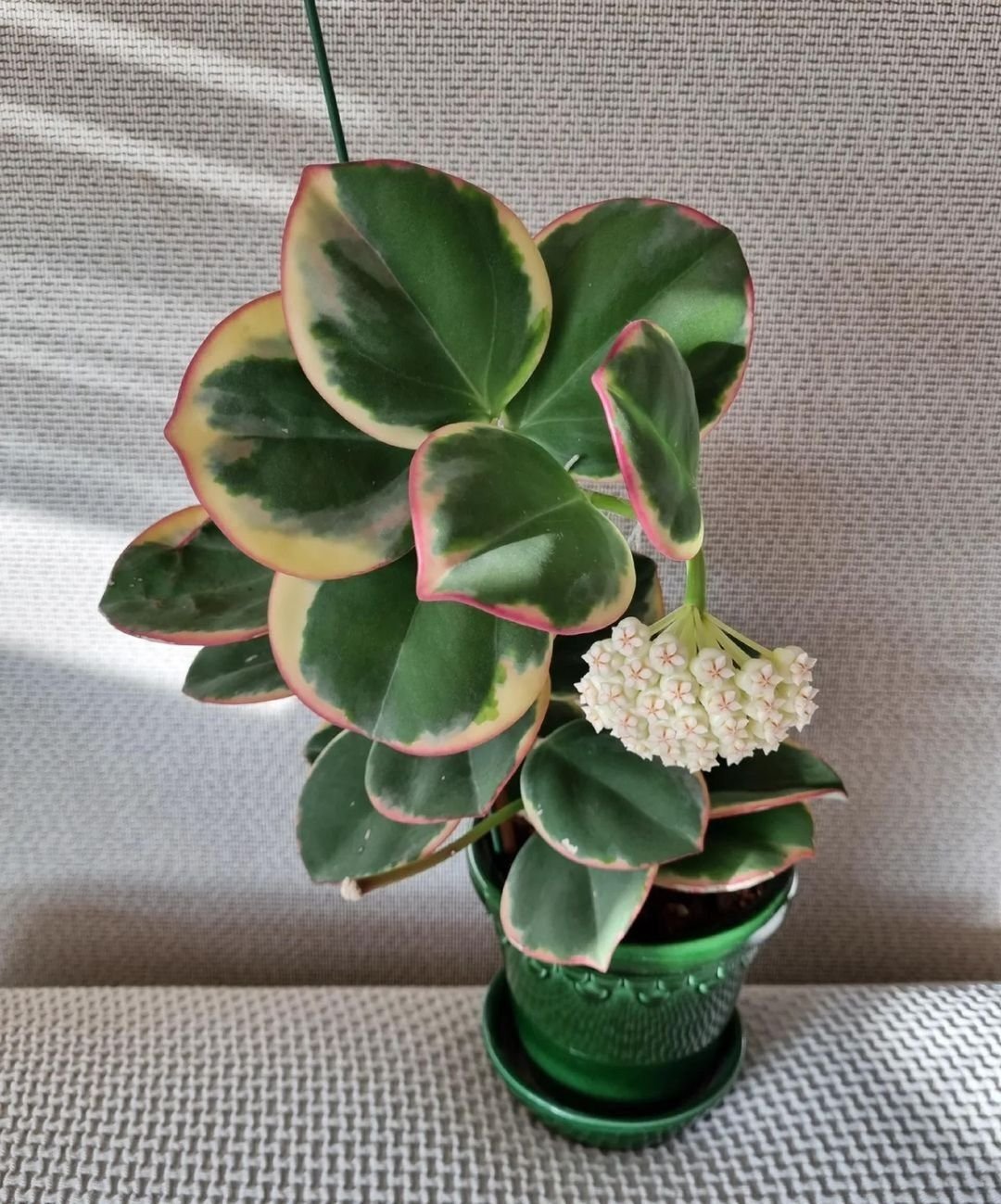Learn the secrets to growing vibrant, trailing hoya plants indoors or out. This guide covers everything from ideal potting mixes and lighting to watering, fertilizing, pruning, and troubleshooting common issues.
Hoya plants, also known as wax plants or Hindu rope plants, are beloved for their thick, waxy leaves and stunning clusters of star-shaped flowers. Though native to tropical Asia and Australia, hoyas make excellent, easy-care houseplants that can thrive for years with the right conditions.
Here’s a short and easy information chart about Hoya plants:
| Aspect | Information |
|---|---|
| Botanical Name | Hoya spp. |
| Common Names | Wax Plant, Porcelain Flower, Wax Vine |
| Plant Type | Evergreen perennial |
| Zones | 9-11 (outdoors); grown as houseplants in all zones |
| Exposure | Bright, indirect light |
| Bloom Time | Spring to summer |
| Height/Spread | 2-4 feet long, trailing or climbing |
Ideal Growing Conditions

Hoyas grow best in very bright, indirect light. An east or west-facing window is perfect. Inadequate light is a common reason for lack of flowering.
During the warmer months, hoyas can be moved outdoors to a shaded patio or placed in a hanging basket beneath tall trees. Just be sure to bring them back inside before nighttime temperatures drop below 50°F.
Proper potting mix is key for healthy hoya growth. Use a well-draining soil mixture made for epiphytes or orchids. Standard potting mix holds too much moisture. Good aeration is a must.
Try a chunky blend of one part peat moss or coir to two parts perlite, orchid bark, charcoal chunks and/or small lava rocks. This mix replicates the loose, airy medium hoyas grow in around trees in their native habitat.
Water and Humidity Needs
One of the trickiest aspects of hoya care is proper watering. These plants are quite drought-tolerant but dislike overly wet, soggy soil which can lead to root rot.
The soil should be allowed to fully dry out between waterings. Wait until the pot feels light and the potting mix is completely dry down to the bottom before thoroughly rehydrating.
When watering, slowly saturate the entire root zone until excess moisture drains freely from the bottom. Then wait for it to dry out completely again. Adjust watering frequency based on your home’s conditions and the season.
Indoor hoyas do best with at least 40% ambient humidity. Use a pebble tray, mist the leaves regularly or place a humidifier nearby if your air is very dry. Leaves may get crispy brown tips if humidity is too low.
Fertilizer Needs
Feed hoyas every 2-4 weeks during their active spring and summer growing season using a balanced liquid fertilizer diluted to half strength. Options include a basic 10-10-10 houseplant formula or one made specifically for orchids or flowering plants.
Stop fertilizing in the fall and winter months when their growth is minimal. Too many nutrients during this dormant period can cause issues like leaf loss or soft, stretched growth.
Annual repotting is recommended but isn’t absolutely necessary. Hoyas are quite content being rootbound in smaller containers, which helps promote flowering. When repotting, go up just an inch or two in pot size and use fresh, well-draining potting mix.
Pruning and Propagating
Hoyas can get very long and leggy over time. Prune off any unsightly or excessive stem growth as needed, making clean cuts just above a leaf node. The cut stems make excellent plant propagations. Simply allow the cut ends to dry out and form a callus before sticking them into moist sphagnum moss or a chunky potting mix. Keep the medium consistently moist but not wet. New roots should start developing within several weeks.
You can also propagate hoyas from just a single leaf cutting with a short stem attached by using the same process. Be sure to include at least one leaf node on the cutting. Hoyas can bloom on fairly young plants, but larger, more mature specimens tend to flower more prolifically. The thick, fleshy flower clusters are among their biggest draws, often smelling faintly of chocolate, vanilla or cinnamon.
Gently shake branches to help self-pollinate and encourage the flowers to develop into plump seed pods, if desired. The pods split open when ripe to reveal downy tan seeds with a wispy coating designed for wind dispersal.
Troubleshooting Problems
Like many tropical plants, hoyas are prone to issues from improper watering. Shriveled, crispy leaves indicate underwatering while soft, yellowing foliage can signal overwatering and root rot setting in.
Hard water residue or buildup of dissolved salts and minerals can also cause brown leaf edges. Flush the soil thoroughly every few months to rinse away any accumulation.
Pests like mealybugs, spider mites or scale may bother indoor hoya plants, usually showing up as cotton-like masses along stems. Use insecticidal soap, neem oil, or another houseplant-safe pesticide treatment to eliminate these bugs promptly.
Cool temperatures below 50°F, lack of humidity, or inadequate light can make hoyas stop blooming and go into a dormant phase. Increase warmth, humidity and light as needed.
With a little practice, hoyas are remarkably forgiving and low-maintenance plants to grow indoors or out. Their trailing, wax-coated leaves and exquisite, long-lasting flowers are guaranteed to delight any plant parent.








Leave a Reply